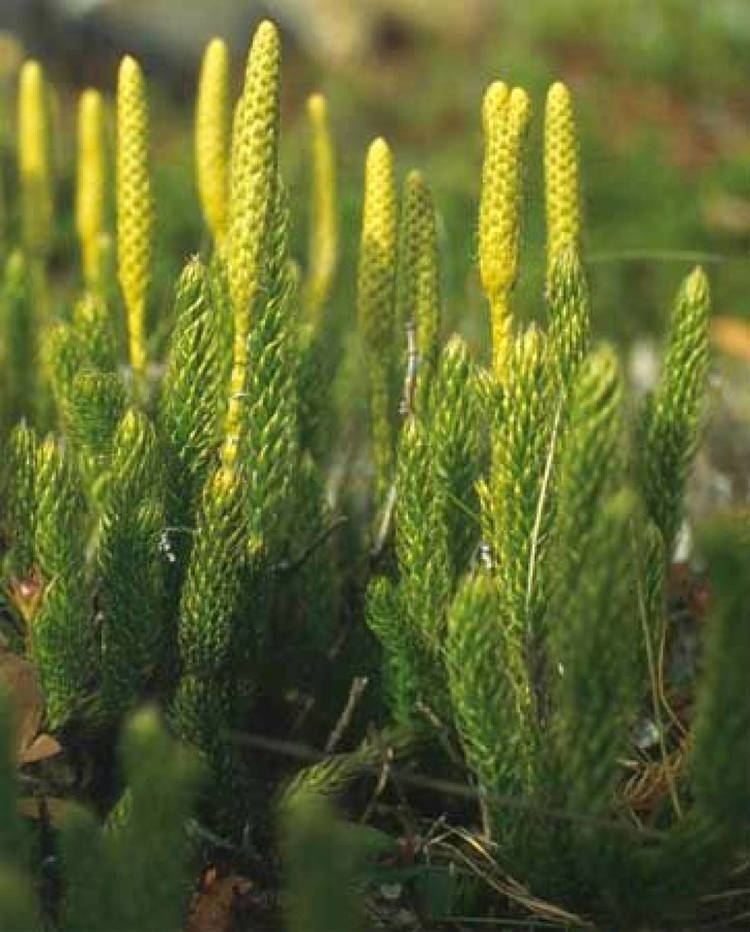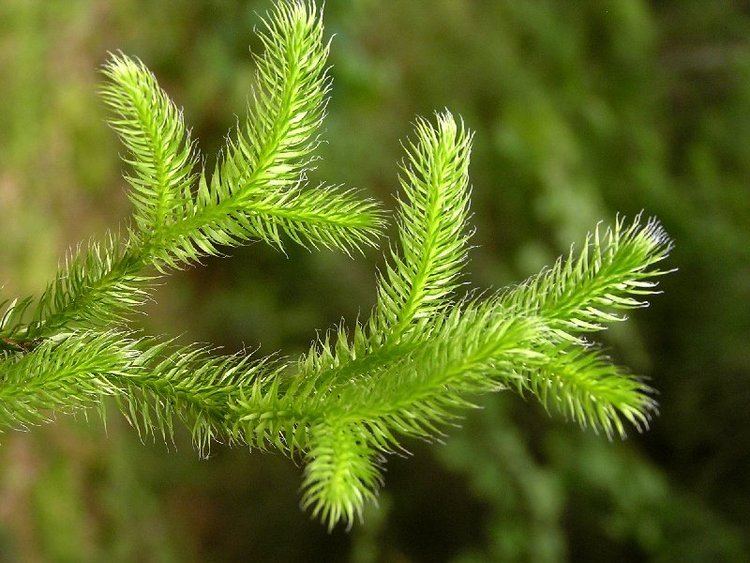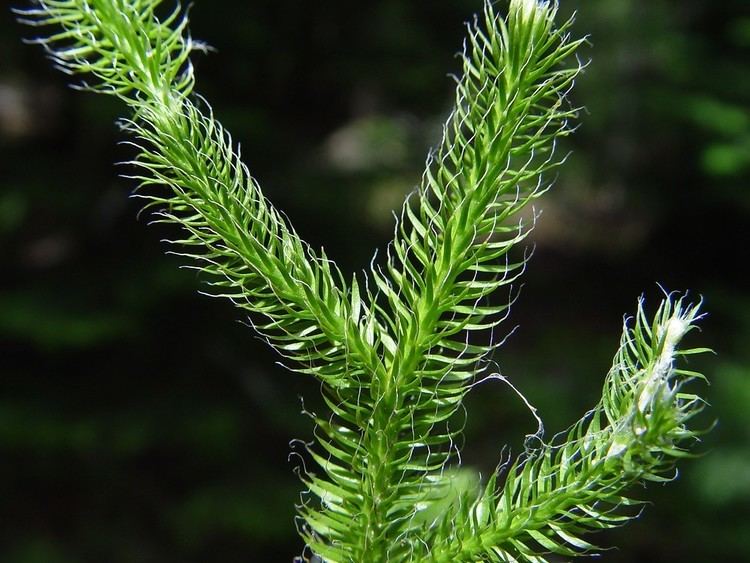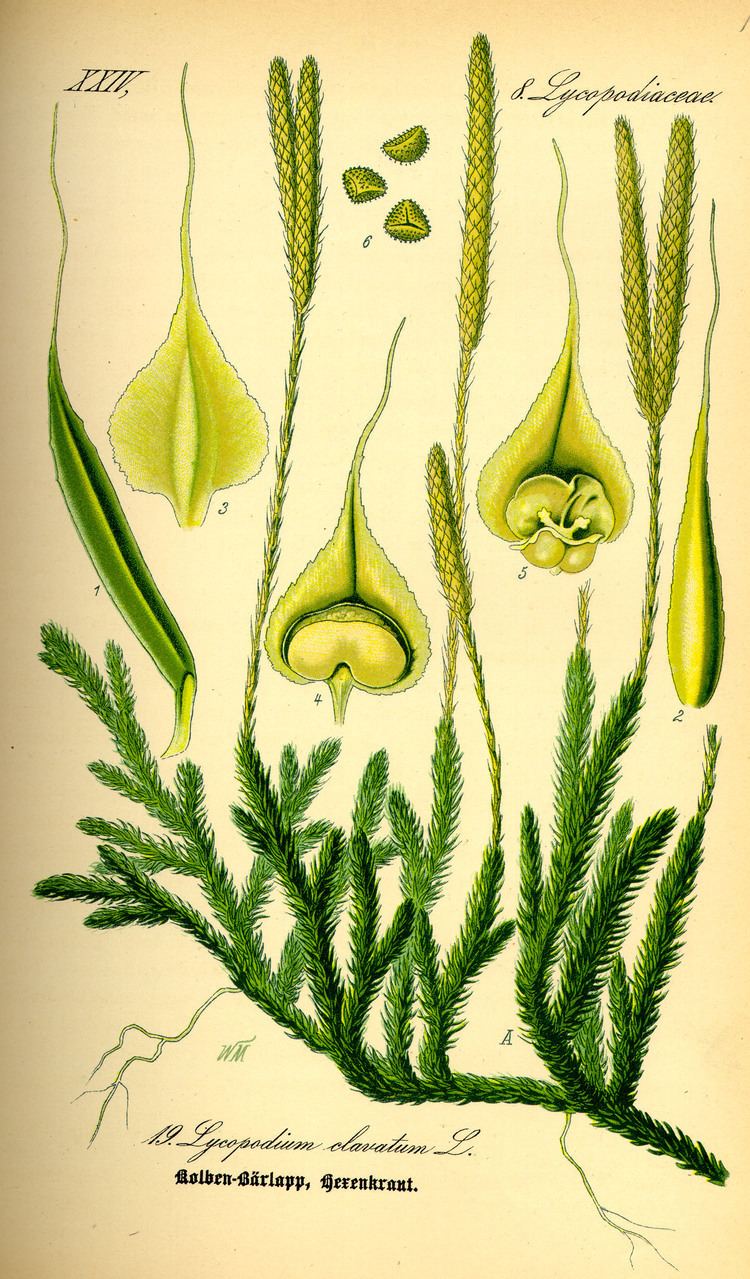Scientific name Lycopodium | Division Pteridophyta | |
 | ||
Lower classifications Lycopodium clavatum, Lycopodium annotinum, Lycopodium dendroideum, Lycopodium obscurum, Lycopodium deuterodensum | ||
Information about lycopodium clavatum homeopathy
Lycopodium (from Greek lukos, wolf and podion, diminutive of pous, foot) is a genus of clubmosses, also known as ground pines or creeping cedar, in the family Lycopodiaceae, a family of fern-allies (see Pteridophyta). They are flowerless, vascular, terrestrial or epiphytic plants, with widely branched, erect, prostrate or creeping stems, with small, simple, needle-like or scale-like leaves that cover the stem and branches thickly. The leaves contain a single, unbranched vascular strand and are microphylls by definition. The kidney-shaped or reniform spore-cases (sporangia) contain spores of one kind only (isosporous, homosporous) and are borne on the upper surface of the leaf blade of specialized leaves (sporophylls) arranged in a cone-like strobilus at the end of upright stems. The club-shaped appearance of these fertile stems gives the clubmosses their common name.
Contents
- Information about lycopodium clavatum homeopathy
- Lycopodium garden plants
- Section Lycopodium
- Section Obscura genus Dendrolycopodium
- Section Annotina genus Spinulum
- Section Diphasium
- Section Lycopodiastrum
- Section Magellanica genus Austrolycopodium
- Section Pseudolycopodium
- Section Pseudodiphasium
- Uses
- References

Lycopods reproduce asexually by spores. The plants have an underground sexual phase that produces gametes, and this alternates in the lifecycle with the spore-producing plant. The prothallium developed from the spore is a subterranean mass of tissue of considerable size and bears both the male and female organs (antheridia and archegoniae). However, they are more commonly distributed vegetatively through above- or below-ground rhizomes.
About 76 accepted species occur, with 37 species widely distributed in temperate and tropical climates, though they are confined to mountains in the tropics.

The genera Diphasiastrum, Lycopodiella, and Huperzia were once included within this genus, but are now recognized as being distinct. Some workers also segregate several more genera, including Dendrolycopodium for L. obscurum and related species, and Spinulum for L. annotinum and related species.

The spores of Lycopodium and Diphasiastrum species are harvested and are sold as lycopodium powder.
Lycopodium garden plants
Section Lycopodium

Section Obscura (genus Dendrolycopodium)

Section Annotina (genus Spinulum)
Section Diphasium
Section Lycopodiastrum
Section Magellanica (genus Austrolycopodium)
Section Pseudolycopodium
Section Pseudodiphasium
Uses
Lycopodium sp. herb has been used in the traditional Austrian medicine internally as tea or externally as compresses for treatment of disorders of the locomotor system, skin, liver and bile, kidneys and urinary tract, infections, rheumatism, and gout, though claims of efficacy are unproven. It has also been used in some US government chemical warfare test programs such as Operation Dew. Lycopodium powder is also used to determine the molecular size of oleic acid.
